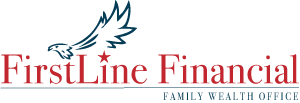Even before inflation hit a 40-year high in June 2022, talks about a recession was looming in every investor’s mind and showcased front and center on media platforms. When a recession hits, much more is at stake than stock market shares. When the COVID-19 began in late February 2020, the U.S. economy significantly shrank before it quickly rebounded. But the damage had already been done.
When economists start pointing to signs of a recession, it is natural to feel anxious. Retirees on a fixed income or those getting ready to begin retirement can feel especially vulnerable.
There can be good news in all of this. Just because the market is largely unpredictable does not mean your retirement income has to be. By understanding your finances and getting a clear picture of your portfolio goals, you can build a plan that takes worse-case scenario into account. Setting a clear picture of your finances will build confidence in retirement – even in a recession.
This article will walk you through four steps to do now to ensure your retirement portfolio can weather the storm of the markets during a recession.
1. Review your expenses. Whether in a prosperous bull market or declining bear market, the list of things to prepare for in retirement is lengthy: rising health care costs1, end-of-life2 expenses and a longer life often top the list.
You’ll also want to factor inflation into your retirement plan in case the costs of everyday items, travel and other expenses continue to rise. Inflation erodes the value of savings and will continue to do so after you retire. Recently, higher costs for everything from gasoline to agricultural products have trickled down to consumers. The financial repercussions from high inflation, political unrest and the COVID-19 pandemic will continue to evolve, heightening concerns for Americans’ future economic well-being.3
So, what does this all mean for me? Recessions often lead to job cuts and less economic spending. You’ll want a handle on your current and future expenses. Calculate what you spend last month on mortgage/rent, home/rental insurance, utilities (water, electricity, gas), auto (payments, insurance, fuel), food (good and dining out), and anything else that falls under your daily living expense.
Based on a recent study, a 65-year-old couple retiring in 2021 can anticipate spending on average $300,000 in health care and medical expenses throughout their retirement, excluding long-term care.4 (That would be approximately $1,000 per month over a 25-year retirement or $1,250 per month over a 20-year retirement.) You may also wish to factor in health care expenses that could arise at the end of your retirement years. Add an amount that you feel reflects how much you can anticipate spending per month on health care.
Add your daily living expenses and health care together and multiply by 12 to get your approximate annual expense in retirement. Of course, these expenses don’t include the things you may want to do in retirement, things like traveling, hobbies and family visits. These things not only make life more fulfilling, but research also shows participating in the activities you enjoy is good for your health.5 So, as you consider your expenses, remember to take your dreams into account.
2. Evaluate your assets. Where does your nest egg live? If you’re like many, your assets are spread out in things like 401(k)s, mutual funds and company stock options. All of those assets are tied to the market, so, during a recession, they could significantly decrease in value. On average, the stock market loses 13.7%6 in a correction and 32.5% in a bear market.7
Take inventory of your investment assets such as 401k, IRA, Roth IRA, stock options etc. Now consider the expenses you calculated in step 1. Would you have enough income to meet those expenses during a recession? Could you support your lifestyle if you and your spouse lived to age 80, 90 or beyond? (According to the Social Security Administration, the average 65-year-old man can expect to live to age 84, while the average 65-year-old woman can expect to live to age 86 ½.8 One in three 65-year-olds will live to age 90 and one in seven to at least 95.9
If your portfolio is heavy in the stock market, you might want to consider other alternatives that aren’t as volatile such as fixed income products that provide preservation of capital and income. But before you consider de-risking your portfolio, you’ll want to understand your risk tolerance.
3. Know your risk tolerance. While investing in the market is a risk, it is an effective way to grow assets for those pre-retirees who got a late start on their savings. It also is a great way to stay ahead of inflation. Because the only way to beat inflation is to make more money. But how much of your savings should be invested in the market?
Calculating your risk tolerance, the degree of variability in investment returns you are willing to withstand, can help you decide. Many factors go into determining your risk tolerance, and a financial professional has access to tools that can pinpoint the exact amount of risk that’s appropriate for you. But you can get a rough idea of how much risk should be in your portfolio by asking yourself a few questions.
How much would you feel comfortable losing if your investments had a bad year (or series of years)?
How soon do you want to retire? (The closer you are, the less risk you want to take on.)
No matter what your risk tolerance is today, it likely will change in the future, and you’ll need to rebalance your portfolio. For instance, those in or nearing retirement may want to take funds from their 401(k), which is directly tied to the stock market, to a lower-risk financial product. However, because 401(k)s are tax-deferred, moving them to another type of account could cost you in taxes. A licensed financial professional can work with your tax professional to help ensure your assets are moved as tax efficiently as possible while staying within your risk tolerance.
4. Make moves. The one thing you don’t want to do during looming recession fears is… nothing. Doing nothing for those currently in retirement and only have a fixed income to rely on can put your portfolio in a vulnerable state. What moves can we take? Let’s go back to step 2. If you are nearing retirement or in retirement and all your assets are in the stock market, please do not do nothing. Make moves to preserve your assets especially during unpredictable times.
By taking action sooner rather than later, it is certainly possible to build up your nest egg to where you need it to be before you retire. But if you’re anticipating a recession, especially in the time leading up to your retirement or during the early years of your retirement, you may be hesitant to rely too heavily on the stock market.
Find a good blend of fixed income products that don’t rely on the stock market and provide a consistent income stream. Consider annuities that don’t rely on the stock market and are designed to meet long-term needs for retirement income. There are also private investments that can yield competitive rates for a certain number of terms. Constructing a retirement portfolio that includes a balanced blend of growth (stock market), fixed income products, and safety of principle is a sure fire way of creating a longevity plan for your assets. A plan that can sustain you during your retirement years.
You don’t need a bull market to guarantee a great retirement. One of the keys to a comfortable lifestyle in any economy is planning ahead. If the thought of building a plan on your own is overwhelming, there’s help available. A qualified financial professional can help you assess where you are and help guide you to get where you want to be — and stay there. You worked hard for retirement. Don’t let a recession kidnap you from the retirement you deserve.
Sources:
1 Fidelity. Aug. 31, 2021. “How to plan for rising health care costs.” https://www.fidelity.com/viewpoints/personal-finance/plan-for-rising-health-care-costs. Accessed May 3, 2022.
2 Cory Stieg. CNBC. July 17, 2021. “Researchers say the probability of living past 110 is on the rise – here’s what you can do to get there.” https://www.cnbc.com/2021/07/17/study-living-past-110-is-becoming-more-likely-longevity-tips.html. Accessed May 3, 2022.
3 Holly Ellyatt. CNBC.com. April 21, 2022. “From soaring food prices to social unrest, the fallout from the Russia-Ukraine war could be immense.” https://www.cnbc.com/2022/04/21/from-food-to-inflation-the-russia-ukraine-war-has-a-global-impact.html. Accessed May 3, 2022.
4 Fidelity. Aug. 31, 2021. “How to plan for rising health care costs.” https://www.fidelity.com/
viewpoints/personal-finance/plan-for-rising-health-care-costs. Accessed May 3, 2022.
5 Samaritan Health Services. Feb. 1, 2021. “Hobbies Are Good for You & Your Health.” https://www.samhealth.org/about-samaritan/news-search/2021/02/01/hobbies-are-good-for-you-and-your-health. Accessed May 3, 2022.
6 Miranda Marquit and Benjamin Curry. Forbes Advisor. March 7, 2022. “Market Correction: What Is A Correction?” https://www.forbes.com/advisor/investing/what-is-market-correction/. Accessed May 3, 2022.
7 Kat Tretina and Benjamin Curry. Forbes Advisor. Feb. 24, 2022. “Bear Market and Bull Market: What’s the Difference?” https://www.forbes.com/advisor/investing/bear-market-vs-bull-market/. Accessed May 3, 2022.
8 Social Social Security Administration. “Retirement Benefits: What is your life expectancy?” https://www.ssa.gov/benefits/retirement/planner/otherthings.html. Accessed May 3, 2022.
9 Social Security Administration. 2022. “When to Start Receiving Retirement Benefits.” https://www.ssa.gov/pubs/EN-05-10147.pdf. Accessed May 3, 2022.
Photo by Ankur Khandelwal on Unsplash


